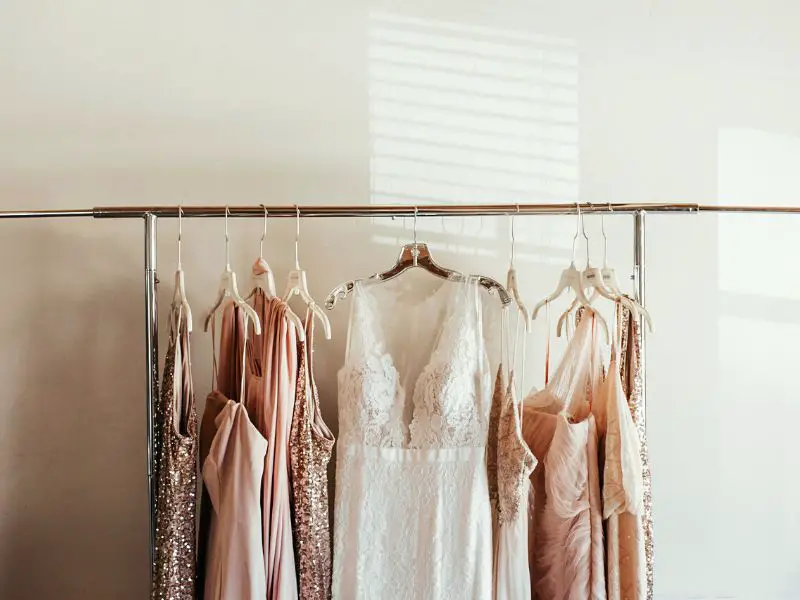In recent years, the fashion sector has taken rapid moves toward sustainability. A worldwide pandemic, raging wildfires, scandals involving fast-fashion corporations, and a growing awareness of the climate catastrophe have left their (indelible) stamp on us. For conscientious customers, fashion is aesthetically pleasing and environmentally friendly.
Short-lived fashion fads are losing relevance, while sustainable fashion trends are gaining momentum. And due to the rapid development of climate technology, (sustainable) fashion advances each year. In this article, we have investigated sustainable fashion trends for 2022 and compiled a list of those that will last beyond a single season.

When we speak of sustainable fashion trends, we are not talking about specific cuts, colors, patterns, or new style combinations revealed on Fashion Week catwalks but innovative production techniques and industry-wide revolutions. It is about long-term trends that can make the fashion industry, our consciousness, and our consumption more sustainable in the following year and beyond.
Sustainable Fashion Trends of the Year
To list all the important sustainable fashion trends for the year would be impossible, as real innovation is taking place in so many areas of the global fashion industry. The following seven trends are our way of summing up what we feel will be some of the most significant changes to affect the garment and textiles industry in the next few years.
1. Recyclable Textiles
The throwaway mentality toward old clothes is one of the fashion industry’s most serious issues. Fast fashion businesses’ fast-changing collections and the low quality of their short-lived items have rendered fashion disposable in recent decades.
The fashion industry comprises complex blends of different fibers, which are difficult to separate and recycle individually, making up a near-insurmountable challenge. Furthermore, as our purchase habits have almost quadrupled since 2000, the fast fashion sector is now answerable for around 40 million tonnes of textile waste each year!
Recycling fashion is a critical sustainable trend, and 2022 was the year that gave us a preview of this development. Technology has now enabled us to recycle old textiles and create new ones. Recycling textiles have the potential to turn the fashion industry into a circular economy, making it far more ecologically friendly and sustainable in the long term!
2. Renting Fashion
Renting clothes is among the most important sustainable fashion trends. In fact, it’s a new industry that could help solve the throwaway fashion crisis and will probably replace traditional fast fashion in the future.
Renting garments has already become mainstream in many Western countries and emerging economies. For example, Rent The Runway has become a massive success since its launch in 2009.
Many start-ups, applications, and platforms have been developed to assist customers with clothing swapping and borrowing in recent years. Like a library, one may rent clothing for a limited time rather than purchasing new items.
For special occasions, the approach makes perfect sense. And based on the demand and buzz, it is undeniably a trend that will last for many years.

3. Fashion on Demand
Another strategy to avoid overproduction of clothing is having your fashion manufactured on demand rather than mass-produced in advance. Many sustainable labels now announce their collections online, gather pre-orders over a set period, and prevent unnecessary textiles from preventing excessive textile waste.
Logically, production expenses arise when a product is produced in small numbers. As a result, people must be ready to wait and spend a little more for this trend to catch on. After all, in today’s fast-paced world, we’re not accustomed to waiting for a product. But isn’t that the point of slow fashion?
This trend, at this point, is hard to scale (especially for large fashion brands). Nonetheless, fashion on demand is a trend that will gain traction in 2022 and beyond.
4. Local Fashion
The future is local. It’s just a matter of time before more people realize that sustainable fashion trends are here to stay. Local fashion is also quickly becoming mainstream in the industry because it helps the local economy grow.
The collaboration between designers, communities, and NGOs offers new opportunities–not only economically but also environmentally – for indigenous groups. Local fashion means reducing the impact on both the environment and local communities by collaborating with local groups, such as integrating traditional patterns or creating new fashions based on durable natural fibers such as hemp or ramie.

5. Metaverse Fashion
The metaverse is perhaps the most recent and bizarre phenomenon that will profoundly affect our future. Our work and routines increasingly occur in virtual places. It is just a matter of time before we can express ourselves in the metaverse through virtual fashion in addition to NFTs and games. Nike even placed its first investment in this arena by acquiring virtual shoe developer RTFKT.
There are several sustainable fashion trends, but virtual fashion is unquestionably one of the most exciting technologies. Despite requiring energy, the manufacture and usage of virtual clothing are far more eco-friendly than the production of actual clothing, which involves raw materials, electricity, water, dyes, and CO2. Moreover, there is no textile waste in a virtual fashion. It is an intriguing trend that will affect our lives beyond the realm of fashion.
6. Second Hand and Vintage Fashion
Clothing has always been exchanged, whether on internet sites such as Rebelle, at flea markets, between families, or through file sharing. This movement toward sustainable fashion is becoming increasingly common, and the industry increasingly recognizes it as an excellent economic model. As the fast-fashion industry produces more and more products, customers are becoming aware of the dangers associated with it and are attempting to make old clothes fashionable once more.
You’ll also appreciate the uniqueness of worn and elegant things that no one else will have. The resurrection of second-hand and vintage fashion benefits, not just the planet, but also the desire of purchasers to have distinctive and original pieces.

7. Product Passports
A “product passport” serves to provide customers with important information about the provenance and lifecycle of a particular item of clothing. It may include details about the materials used in its production and where they came from, so consumers can decide when buying.
In addition, companies can include information on how to clean the garment after use correctly, how they were made, and their environmental impact. In short, it is a tool to make environmentally-friendly fashion more accessible.
Author’s Note
Sustainable fashion is becoming more and more critical. With the growth of fast-fashion companies, people are becoming aware of the risks associated with these companies. Chemical and textile waste is increasing, and the quality of garments is also diminishing. As a result, sustainable fashion has become one of the most important trends in recent years and will continue to grow.
Find out how you can help the environment while still being fashionable with these guides:


2 thoughts on “7 Sustainable Fashion Trends That Are Changing the Face of the Fashion Industry”